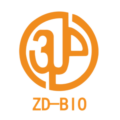The most serious soil pollution is mainly divided into two parts, one is organic pollution, the types of pollutants include petroleum, polycyclic aromatic hydrocarbons, pesticides, organic chlorine, etc., and the other one is heavy metal pollution, mainly including copper, lead, chromium and other carcinogenic heavy metals Excessive pollution.
The application of ethyl lactate in soil pollution treatment is mainly to form a pollution remediation system with other organic matter. There are two main application directions: one is the combination of vegetable oil and ethyl lactate to form a system, which mainly deals with soil pollution. Organic pollutants such as chlorine-containing organics and polycyclic aromatic hydrocarbons. Second, ethyl lactate and organic chelating agent form a composite system, mainly using in-situ leaching method to deal with polycyclic aromatic hydrocarbons and heavy metal pollution.
- Ethyl lactate, vegetable oil, emulsifier and other additives are made into eluent according to a certain ratio to treat soil pollution. Mainly vegetable oil is used as anaerobic reducing agent or auxiliary agent to repair soil polluted by organic matter (such as chlorinated organic solvent and polycyclic aromatic hydrocarbon, etc.).
The mechanism of action of vegetable oil in remediation of soil contaminated by chlorinated organic compounds:
In practical applications, vegetable oil fermentation produces hydrogen molecules (H2) and small-molecule fatty acids, such as acetic acid, lactic acid, propionate, etc. The hydrogen produced in it can replace the chlorine in the organic matter and play the role of reductive dechlorination. In addition, the produced short-chain small-molecule fatty acids can provide carbon and energy to microorganisms, and the metabolism of microorganisms also accelerates the process of reductive dechlorination. During the reduction of chlorinated olefins, such as perchloroethylene (PCE), using vegetable oils, chlorine atoms are replaced by hydrogen atoms and progressively reduced to trichloroethylene (TCE), cis-1,2-dichloroethylene (cDCE), and Vinyl chloride (VC), which is eventually reduced to non-toxic ethylene.(As shown below)
Reductive dechlorination of perchloroethylene:
In the process of dechlorination, the hydrogen produced by the fermentation of vegetable oil acts as the electron donor, and the chlorine-containing organic matter acts as the electron acceptor, and the following reactions occur:
- Soil remediation of polycyclic aromatic hydrocarbons/heavy metal composite pollution by ethyl lactate-EDDS/EDTA system. In order to solve the problem of simultaneous remediation of soil heavy metals and organic pollutants, ethyl lactate was introduced into the field of soil remediation, and an ethyl lactate-organic ligand (EDDS/EDTA)-water composite leaching system was developed. On the basis of the remediation effect, mechanism of action and recycling of eluents of , polycyclic aromatic hydrocarbons and their composite polluted soil, a relatively economical and efficient soil green elution technology has been established.
1) The organic chelating agents EDDS and EDTA can complex with heavy metals in soil to form soluble organometallic complexes, which can increase the availability and mobility of heavy metals. However, ethylenediaminetetraacetic acid (EDTA) may cause groundwater pollution due to its persistence and non-biodegradability, while [S,S]-ethylenediaminedisuccinic acid ([S,S]-EDDS, abbreviated as EDDS ), although biodegradable, has been widely used in soil in situ leaching and remediation in recent years. However, the high synthetic cost of EDDS limits its application in soil remediation. On the other hand, ethyl lactate (EL) has low toxicity, is easily biodegradable, is cheap, soluble and easy to regenerate. The addition of ethyl lactate promotes the coordination of the overall system and the dissolution of minerals, and greatly improves the repair effect of organic chelating agents EDDS and EDTA on heavy metals. The amount of ligand. This finding provides an effective way to address the cost of EDDS use and the risk of EDTA use in current soil remediation.
2) The established composite leaching system has a certain synergistic effect in the remediation of copper, phenanthrene and pyrene and their composite polluted soil. Test results show that the average leaching rate of Cu is 41.54% (EDDS/Cu=2), and the leaching rates of phenanthrene and pyrene with 20% ethyl lactate are 69.69% and 39.87%, respectively. Ethyl lactate has a good elution ability of polycyclic aromatic hydrocarbons phenanthrene and pyrene in soil. The elution ability of ethyl lactate to different soils is different, loess > paddy soil > black soil > mining soil. The leaching rate was positively correlated with soil organic matter content. And the EDDS/EDTA in the system and the heavy metal Cu in the soil did not affect the leaching efficiency of ethyl lactate to PAHs in the soil.
3) The process and operating conditions for the recycling of the eluent in the ethyl lactate-organic ligand-water composite system with resin adsorption and ion exchange as the core solves the problem of reuse of the eluent and water. The main eluent and The reuse rate of water is about 80-90%.
Based on this, we can draw the conclusion that the ethyl lactate-organic ligand (EDDS/EDTA)-water composite elution system has a good elution effect on the soil contaminated by polycyclic aromatic hydrocarbons & heavy metals, and can be considered as a remediation Green eluent for compound contaminated soil.



